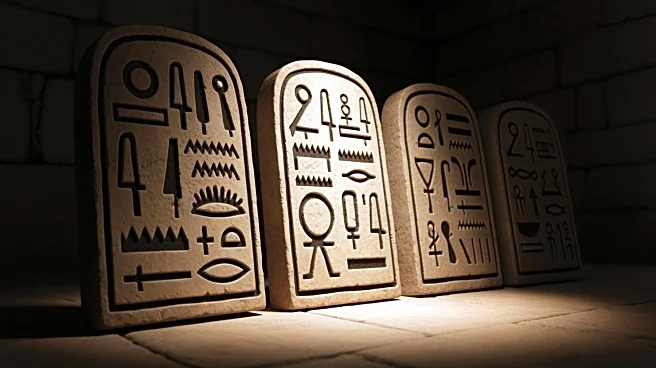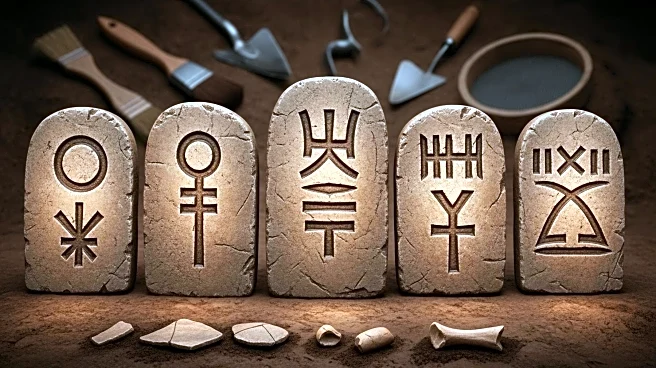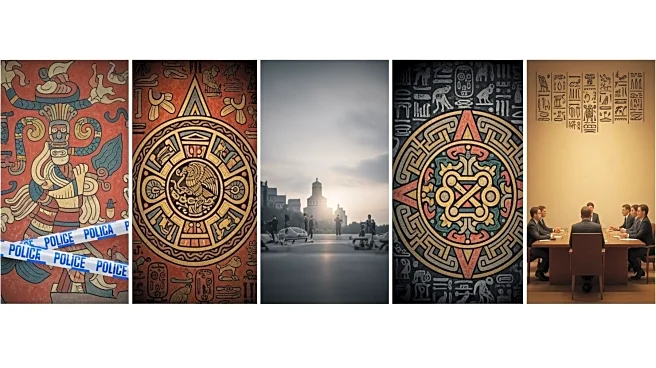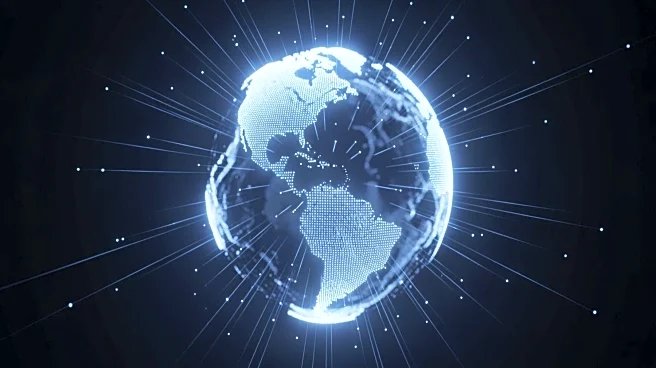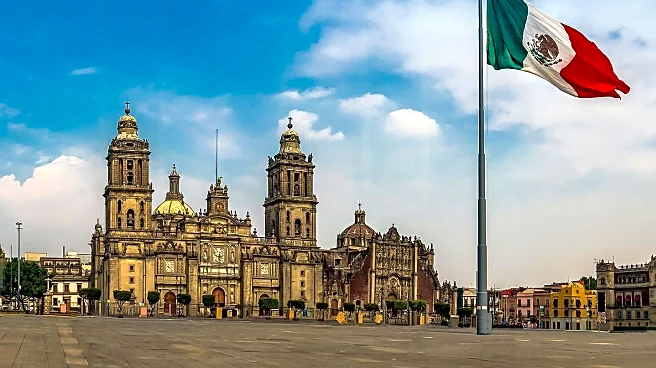What's Happening?
Recent research by Magnus Pharao Hansen and Christopher Helmke from the University of Copenhagen has uncovered a structured script in the murals and pottery of Teotihuacan, an ancient city in Mexico. The
symbols, previously thought to be decorative, are now believed to represent an early form of the Uto-Aztecan language family, possibly Nahuatl. This discovery challenges previous theories about the linguistic timeline of the region and suggests that Nahuatl or related languages may have been spoken in Teotihuacan while it was still thriving. The research indicates that the symbols mix visual logograms with phonetic signs, using the rebus principle, which is rare in the region's archaeological record.
Why It's Important?
The identification of a structured language in Teotihuacan's murals could reshape the understanding of cultural continuity in central Mexico. It offers rare insight into the daily life, beliefs, and identity of Teotihuacan's residents, potentially linking them to later civilizations. This discovery challenges long-held assumptions about the arrival of Nahuatl-speaking peoples in the area, suggesting a linguistic continuity that could strengthen cultural links between Teotihuacan and post-Teotihuacan groups. The ability to read full sequences of text rather than just identifying objects or deities could have significant implications for understanding Mesoamerican cultures.
What's Next?
Further research is needed to validate the hypothesis that the symbols form a coherent writing system. More examples of the signs used in the same way across different contexts would strengthen the argument. The discovery opens new methods for interpreting Mesoamerican scripts using language reconstructions matched to the right time period. If validated, this could lead to a deeper understanding of the cultural and linguistic history of the region.
Beyond the Headlines
The presence of Maya communities within Teotihuacan and its broad influence across Mesoamerica have long been documented. A decipherable script could unify and connect these diverse elements, tying art, rituals, names, and daily practices to specific peoples and traditions. This research is the first to propose that Teotihuacan's symbols carry phonetic as well as visual meaning, potentially offering a new perspective on the region's cultural identity.
